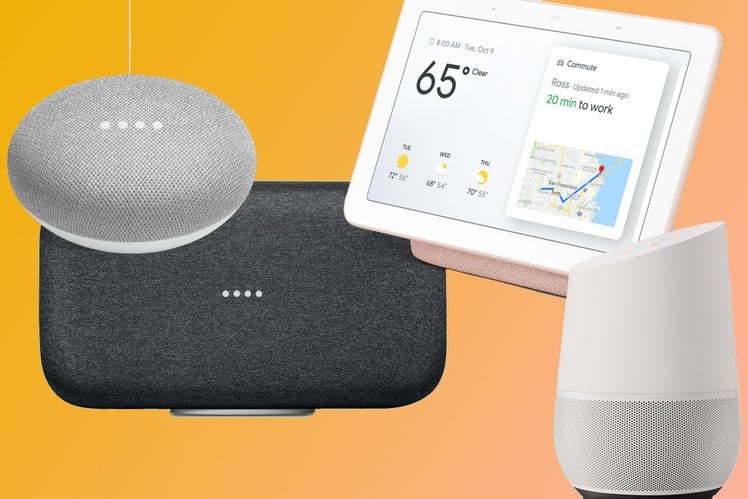
GoogleAppareils domestiques et Nestne sont pas seulement des enceintes avec recherche Google intégrée. Ils vous permettent de contrôler les appareils domestiques intelligents compatibles, de diffuser un film sur votre téléviseur, de remplacer les haut-parleurs de votre bureau et bien plus encore.
Pour tirer le meilleur parti de votreAccueil Google, Maison Mini,Nid Mini, Accueil Max,Nest Hubou Nest Hub Max, nous avons rassemblé une sélection des meilleurs trucs et astuces pour vous aider à maîtriser les haut-parleurs et les écrans à commande vocale en un rien de temps.
Il y a quelques astuces spécifiques à l'appareil au bas de cette fonctionnalité, tandis que d'autres astuces sont divisées en conseils généraux, conseils de divertissement, conseils d'information et conseils de contrôle de la maison intelligente.
Trucs et astuces de Google Home Assistant
Assistant Googleest l'assistant personnel de Google, commeAlexa d'AmazonetSiri d'Apple. Il s'agit d'une conversation, vous pouvez donc poser une question et des questions de suivi, et l'Assistant suivra la conversation, déterminera le contexte et répondra de manière audible avec les bonnes informations.
Google Assistant est une fonctionnalité remarquable dans la gamme d'enceintes Google Home. Vous pouvez l'utiliser pour contrôler les appareils Google Home,Appareils Pixel, ainsi que des services et appareils tiers.
Pour vous aider à comprendre tout ce que l'Assistant peut faire, nous avons rassemblé quelques trucs et astuces spécifiques à l'Assistant,que vous pouvez trouver ici. Cependant, si vous souhaitez découvrir des trucs et astuces uniques, exclusifs ou spécifiques aux appareils Google Home et Google Nest, poursuivez votre lecture.
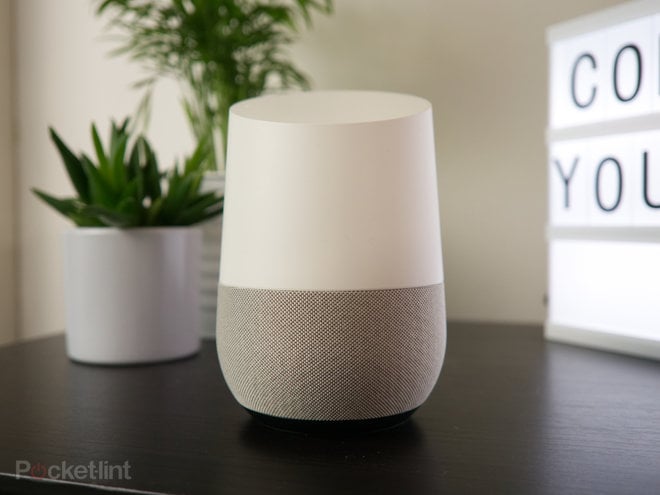
Trucs et astuces généraux sur Google Home
N'oubliez pas d'utiliser un mot d'activation
L'Assistant Google répond à deux « mots d'activation » : « Ok Google » et « Hey Google ». Malheureusement, vous ne pouvez pas modifier ces deux phrases pour le moment. Vous devez également en prononcer un à chaque fois que vous souhaitez interagir avec un appareil Google Home (prononcez la phrase, suivie d'une question ou d'une commande).
Les appareils Google Home prennent en charge la conversation continue. Vous n'aurez donc pas besoin de prononcer les mots d'activation pour une question de suivi, mais vous devrez activer la conversation continue.
Ajouter un membre Accueil
Google Home prend en charge jusqu'à six utilisateurs, qui pourront tous contrôler tous les appareils liés à votre maison, ainsi qu'apprendre à Google à reconnaître leur voix pour une expérience personnalisée en matière de calendriers et de déplacements professionnels, par exemple.
Ouvrez l'application Google Home > Cliquez sur l'onglet Accueil en bas à gauche de l'écran > Appuyez sur l'icône Ajouter > Appuyez sur Ajouter un membre Home > Tapez le nom ou l'adresse e-mail de la personne que vous souhaitez ajouter > Confirmez.
Supprimer un membre Accueil
Si vous souhaitez voir qui a accès à vos appareils Google Home, cliquez sur l'icône des paramètres dans l'onglet Accueil de l'application Google Home, puis appuyez sur Ménage.
Une liste des membres d’accueil apparaîtra ici. Appuyez sur les trois points à droite de leur nom, puis cliquez sur « Supprimer » si vous souhaitez révoquer l'accès. Vous pouvez également ajouter un membre d'accueil ici également en appuyant sur le «+» en haut à droite de l'écran des membres d'accueil.
Comment changer votre pseudo d'accueil
Lorsque vous configurez un nouvel appareil Google Home, vous devrez créer une « Maison » pour l'installer. Cela vous permet ensuite d'ajouter divers autres appareils à cette maison particulière, ou à une nouvelle maison, en nommant chaque maison que vous créez pour les rendre plus faciles à différencier lors de leur ajout.
Pour changer le nom de l'une de vos maisons > Ouvrez l'application Google Home > Appuyez sur l'onglet Accueil en bas à gauche > Appuyez sur l'engrenage des paramètres sous le nom de la maison que vous souhaitez modifier > Cliquez sur Surnom de la maison > Changer le nom > Enregistrer.
Créer un groupe d'intervenants
Pour ceux qui ont la chance d'avoirplusieurs appareils Google Home, vous pouvez créer un groupe d'enceintes avec tous les appareils domestiques ou une sélection d'appareils. Vous pouvez ensuite demander à Google Assistant de diffuser de la musique à partir de ces haut-parleurs et il est également possible de renommer n'importe quel groupe.
Ouvrez l'application Google Home > Cliquez sur l'onglet Accueil en bas à gauche de l'écran > Appuyez sur l'icône Ajouter > Cliquez sur Créer un groupe de haut-parleurs > Sélectionnez les appareils Google Home que vous souhaitez constituer votre groupe > Nommez le groupe > Enregistrer.
Comment filtrer le contenu
Tous les contenus ne conviennent pas à tous les âges et, comme les appareils Google Home disposent de la puissance de la recherche Google, vous souhaiterez peut-être filtrer le contenu pour vous assurer que les petites personnes de votre maison ne voient ou n'entendent pas des choses que vous n'entendez pas. je veux qu’ils le fassent.
Vous pouvez configurer des filtres pour la musique, les vidéos et les fonctionnalités disponibles via l'Assistant. Il est également possible de choisir les appareils que vous souhaitez filtrer, puis de définir les filtres, afin de ne pas avoir à filtrerla maison Miniou Nest Mini dans votre bureau verrouillé, par exemple.
Ouvrez l'application Google Home > Cliquez sur l'onglet Accueil en bas à gauche de l'écran > Appuyez sur Paramètres > Bien-être numérique > Suivez les instructions de configuration.
Planifier les temps d'arrêt
Pour ceux qui souhaitent s'absenter de leur Assistant Google, vous pouvez planifier des temps d'arrêt. Il est également possible de désactiver physiquement les microphones sur tous les appareils Google Home afin que vous puissiez également utiliser cette option.
Ouvrez l'application Google Home > Cliquez sur l'onglet Accueil en bas à gauche de l'écran > Appuyez sur Paramètres > Bien-être numérique > Suivez les instructions de configuration pour la planification des temps d'arrêt.
Donnez un nouveau nom à votre appareil Google Home
Ouvrez l'application Google Home > Cliquez sur l'onglet Accueil en bas à gauche de l'écran > Appuyez sur l'appareil Google Home que vous souhaitez renommer > Appuyez sur le rouage Paramètres dans le coin supérieur droit > Cliquez sur le nom et modifiez-le comme vous le souhaitez. .
Gérez vos notifications par e-mail
Si vous vous inscrivez, Google vous enverra un e-mail pour vous tenir au courant des dernières nouveautés concernant Chromecast, Google Home, les appareils Nest et Google Assistant. On y retrouve des trucs et astuces, des nouveautés, des offres et des partenaires.
Pour gérer vos notifications par e-mail, ouvrez l'application Google Home > Cliquez sur l'onglet Accueil en bas à gauche de l'écran > Appuyez sur Paramètres > Notifications > Notifications générales > Mettez à jour vos préférences.
Afficher votre historique de recherche et de visionnage
Pour afficher votre historique de recherche et de surveillance, ouvrez l'application Google Home > Cliquez sur l'icône de profil dans le coin supérieur droit de l'écran > Appuyez sur Mon activité.
Un site Web s'ouvrira avec tout ce que les appareils Google Home (et l'Assistant sur votre téléphone) ont enregistré. Vous pouvez trier par date et heure, écouter exactement ce que les appareils domestiques ont entendu, obtenir des détails et les supprimer.
Utiliser l'écosystème Google
Pour tirer le meilleur parti de Google Home, l'utilisation des autres produits Google offre la meilleure expérience. Les appareils Home et Nest sont conçus pour fonctionner avec des produits que de nombreuses personnes utilisent fréquemment, tels que Google Agenda et Gmail.
En combinaison avec Google Home, vous pouvez faire de l'Assistant un véritable assistant personnel. Il peut vérifier votre emploi du temps, définir des rappels, ajouter des articles à vos listes de courses et bien plus encore, le tout avec une simple commande vocale. Il extraira même les réservations et les détails des vols de votre courrier électronique par exemple.
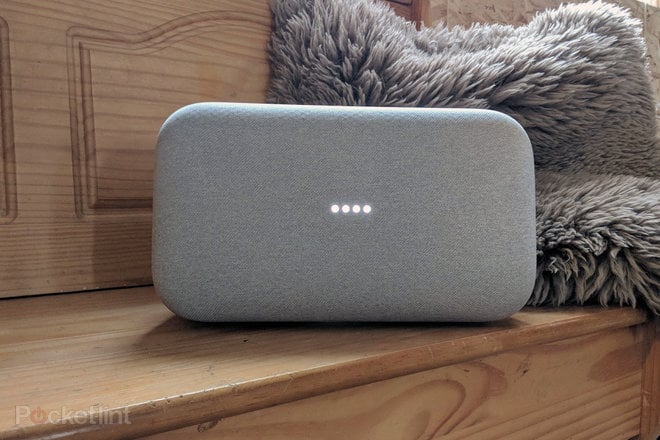
recherche le sur Google
Google Home est essentiellement Google.com. Vous voulez trouver votre supermarché le plus proche ? Besoin de convertir des onces en tasses ? Curieux de savoir quel âge ont Teresa May ou Donald Trump ? Vous êtes-vous déjà demandé quelle est la capitale de l'Inde ? Les appareils Google Home et Nest peuvent être votre assistant et fixer des rendez-vous, mais ils font également office de moteur de recherche.
N'oubliez pas que vous pouvez également poser des questions complémentaires. L'Assistant Google se souviendra toujours du sujet ou du sujet de votre série de questions et vous pouvez poser des questions de suivi sans dire « Ok Google » avant chacune si vous activez « Conversation continue » – comme nous l'avons mentionné ci-dessus.
Comment activer ou désactiver la conversation continue
Ouvrez l'application Google Home > Cliquez sur l'onglet Accueil en bas à gauche de l'application > Appuyez sur Paramètres > Faites défiler jusqu'à « Plus de paramètres » > Appuyez sur l'onglet Assistant sous votre nom et votre adresse e-mail en haut de l'écran > Faites défiler vers le bas vers Conversation continue > Activer ou désactiver la conversation continue.
Comment configurer le mode Invité pour vos appareils Google Home
Vous pouvez configurer un mode Invité pour permettre à toute personne de se connecter à vos appareils Google Home une fois qu'elle a saisi un code PIN à quatre chiffres fourni par l'application Google Home, sans qu'elle ait besoin d'être sur votre réseau Wi-Fi. Vous pouvez activer ou désactiver le mode Invité pour chaque appareil domestique dont vous disposez.
Ouvrez l'application Google Home > Cliquez sur l'onglet Accueil en bas à gauche de l'écran > Appuyez sur l'appareil Google Home pour lequel vous souhaitez configurer le mode Invité > Appuyez sur le rouage Paramètres en haut à droite > Faites défiler jusqu'au Mode Invité > Activez le mode Invité pour afficher le code PIN ci-dessous.
Les invités devront disposer de l'application Google Home et saisir le code PIN affiché lorsque cela leur sera demandé.
Définir une alarme ou une minuterie
Les appareils Google Home peuvent remplacer votre réveil et prennent également en charge les fonctions de minuterie.
Dites « OK Google, règle une minuterie sur cinq minutes » ou « Ok Google, règle une alarme à 7 heures du matin » et vous entendrez une belle mélodie lorsque la minuterie sera écoulée ou qu'il sera temps de vous réveiller. Pour désactiver l'alarme ou la minuterie, il vous suffit de dire « Stop » – pas besoin de prononcer d'abord les mots de réveil.
Comment ajouter des adresses personnelles et professionnelles pour des réponses plus personnalisées
L'ajout d'adresses personnelles et professionnelles permettra aux appareils Google Home d'offrir des réponses plus personnalisées, notamment la météo et les temps de trajet du matin. Si vous ne les avez pas configurés lors de la première configuration de votre appareil Google Home, vous pouvez toujours le faire par la suite.
Ouvrez l'application Google Home > Cliquez sur l'onglet Accueil en bas à gauche de l'écran > Appuyez sur l'icône Paramètres > Faites défiler jusqu'à « Plus de paramètres » > Appuyez sur l'onglet « Vos informations » en haut sous votre nom et votre adresse e-mail > Appuyez sur « Vos lieux » > Ajouter une adresse personnelle / Ajouter une adresse professionnelle.
Comment ajouter des informations de paiement
L'ajout d'informations de paiement vous permet d'utiliser Google Assistant pour commander un taxi ou des plats à emporter, par exemple. Il existe différents paramètres vous permettant de vous assurer que votre identité est confirmée avant de payer par exemple.
Ouvrez l'application Google Home > Cliquez sur l'onglet Accueil en bas à gauche de l'écran > Appuyez sur Paramètres > Faites défiler jusqu'à Plus de paramètres > Appuyez sur l'onglet Vos informations en haut sous votre nom et votre adresse e-mail > Paiements > Ajouter des informations de paiement, adresse de livraison et choisissez les paramètres d’approbation d’achat.
Comment changer la manière dont Google Assistant vous appelle
Voulez-vous que Google Assistant vous appelle patron, Batman ou la plus belle dame de toutes ? Aucun problème.
Ouvrez l'application Google Home > Cliquez sur l'onglet Accueil en bas à gauche de l'écran > Appuyez sur Paramètres > Faites défiler jusqu'à Plus de paramètres > Appuyez sur l'onglet Vos informations en haut sous votre nom et votre adresse e-mail > Surnom > Modifiez ce que vous voulez Assistant pour vous appeler. Vous pouvez même vérifier qu’il le prononce correctement et sinon, vous pouvez l’épeler.
Comment changer l'unité de température
Ouvrez l'application Google Home > Cliquez sur l'onglet Accueil en bas à gauche de l'écran > Appuyez sur Paramètres > Faites défiler jusqu'à Plus de paramètres > Appuyez sur l'onglet Vos informations en haut sous votre nom et votre adresse e-mail > Météo > Choisissez Fahrenheit ou Celsius .
Comment apprendre à Google Assistant à reconnaître votre voix
Apprendre à Google Assistant à reconnaître votre voix vous offrira une expérience plus personnalisée. Il affichera votre calendrier par exemple, ou votre trajet du matin, plutôt que vos partenaires. Cela vaut la peine d'amener d'autres membres Home à configurer également Voice Match afin que les appareils Home offrent la meilleure expérience globale.
Ouvrez l'application Google Home > Cliquez sur l'onglet Accueil en bas à gauche de l'écran > Appuyez sur Paramètres > Faites défiler jusqu'à Plus de paramètres > Appuyez sur l'onglet Assistant en haut sous votre nom et votre adresse e-mail > Voice Match > Suivez les instructions. Si tu as unNest Hub Max, vous pouvez également utiliser Face Match, qui se trouve juste en dessous du paramètre Voice Match.
Pour ceux qui possèdent plusieurs appareils domestiques, vous ne devriez avoir besoin d’utiliser Voice Match qu’une seule fois. Les autres appareils récupéreront les informations.
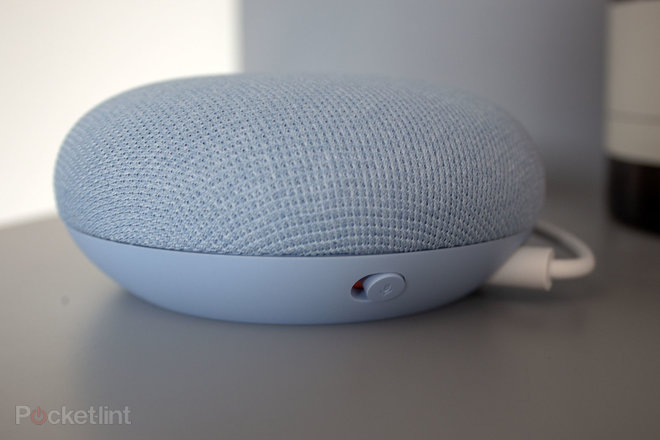
Comment changer votre calendrier par défaut
Ouvrez l'application Google Home > Cliquez sur l'onglet Accueil en bas à gauche de l'écran > Appuyez sur Paramètres > Faites défiler jusqu'à Plus de paramètres > Appuyez sur l'onglet Services en haut sous votre nom et votre adresse e-mail > Calendrier > Calendriers par défaut.
De là, vous pouvez choisir le calendrier que vous souhaitez utiliser pour créer des événements.
Comment configurer les appels vocaux pour les appareils Google Home
Vous pouvez demander à Google Assistant de passer des appels sur vos appareils Google Home, bien que les appels vers les services d'urgence ne soient pas disponibles pour tous les fournisseurs.
Ouvrez l'application Google Home > Cliquez sur l'onglet Accueil en bas à gauche de l'écran > Appuyez sur Paramètres > Faites défiler jusqu'à Plus de paramètres > Appuyez sur l'onglet Services en haut sous votre nom et votre adresse e-mail > Appels vocaux et vidéo > Suivez le instructions.
Écoutez votre journée
Les appareils Google Home peuvent vous informer sur votre journée, comme votre agenda, les déplacements matinaux, la météo et tous les rappels. Vous pouvez également personnaliser votre rapport pour exclure certains éléments, comme la météo. Le rapport se terminera également par un point de presse.
Tout ce que vous avez à faire une fois que vous avez configuré vos préférences de calendrier et ajouté des adresses, etc., c'est de dire « Ok Google, raconte-moi ma journée ».
Gérer une liste de courses familiale
Vous pouvez ajouter automatiquement des éléments à votre liste de courses avec les appareils Google Home et Nest, soit physiquement, soit en utilisant votre voix. Par exemple : « Ok Google, ajoute du café à ma liste de courses ». La liste apparaîtra dans l'application Google Home et pourra être ajoutée en appuyant sur « Ajouter un article » sur l'écran Liste d'achats.
Pour voir et modifier votre liste de courses, ouvrez l'application Google Home > Cliquez sur l'onglet Accueil en bas à gauche de l'écran > Appuyez sur Paramètres > Faites défiler jusqu'à Plus de paramètres > Appuyez sur l'onglet Services en haut sous votre nom et votre adresse e-mail. > Liste de courses.
La liste de courses ne peut être associée qu'au titulaire principal du compte, mais vous pouvez ajouter des collaborateurs afin qu'ils puissent également y accéder. Appuyez simplement sur l'icône en haut à droite de l'écran Liste de courses pour partager votre liste de courses.
Trouvez votre téléphone à l'aide de votre appareil domestique
Vous ne trouvez pas votre téléphone ? Les appareils Google Home peuvent localiser votre appareil, mais vous devrez le lier à un service appelé IFTTT. Vous devrez créer un compte IFTTT gratuit, après quoi si vousutilisez cette recette ou appletau fur et à mesure qu'ils sont appelés, vous pouvez appeler automatiquement votre numéro depuis votre appareil Google Home lorsque vous dites « Ok Google, trouve mon téléphone ».
Établissez un horaire ou une routine
Il est possible que Google Assistant fasse plusieurs choses avec une seule commande. Par exemple, « Ok Google, heure du coucher » ou « Ok Google, bonne nuit » pourrait vous indiquer la météo du lendemain, vous demander à quelle heure régler votre alarme, régler les lumières, les prises et plus encore, ainsi que verrouiller vos portes (si vous avez appareils compatibles).
Pour définir une routine, ouvrez l'application Google Home > cliquez sur l'onglet Accueil en bas à gauche > Appuyez sur Paramètres > Faites défiler jusqu'à Plus de paramètres > Cliquez sur l'onglet Assistant sous votre nom et votre adresse e-mail > Cliquez sur Routines > Sélectionnez l'une des routines et cochez/décochez les cases qu’elles contiennent.
Une fois les routines configurées, une icône Routines apparaîtra sur l'écran d'accueil de l'application Google Home. Vous pourrez alors accéder plus facilement à vos routines et les gérer.
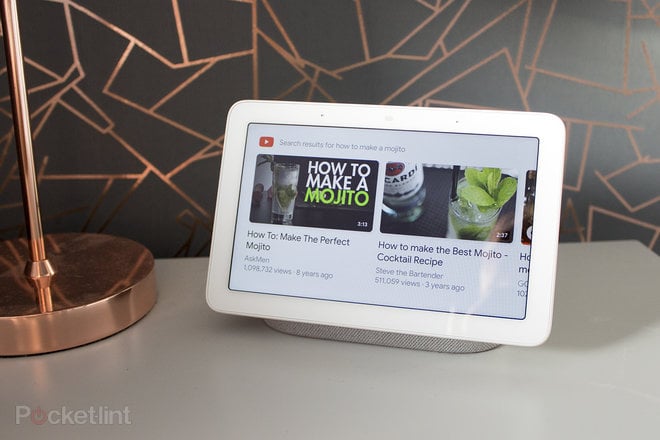
Trucs et astuces de divertissement Google Home
Ajouter un service de musique à votre Google Home
Google Home peut lire de la musique à partir de plusieurs sources, telles que Google Play Music,Spotify, Deezer ou YouTube Music. Sans surprise, cela ne fonctionne pas avec Amazon Music.
Ouvrez l'application Google Home > Cliquez sur l'onglet Accueil en bas à gauche de l'application Google Home > Cliquez sur l'icône « Ajouter » en haut > Cliquez sur Musique et audio dans la section Ajouter des services > Sélectionnez dans la liste et suivez les instructions.
Pour définir votre source par défaut, accédez à l'onglet Accueil de l'application Google Home > Appuyez sur Paramètres > Faites défiler jusqu'à Plus de paramètres > Cliquez sur l'onglet Services > Appuyez sur Musique > Sélectionnez le service lié que vous souhaitez utiliser comme source principale de musique. .
Ajoutez un service vidéo à votre Google Home
Les appareils Google Home fonctionnent également avec divers services vidéo, notamment YouTube, Netflix, BBC iPlayer et All4.
Ouvrez l'application Google Home > Cliquez sur l'onglet Accueil en bas à gauche de l'application Google Home > Cliquez sur l'icône Ajouter en haut > Cliquez sur Vidéo et photos dans la section Ajouter des services > Sélectionnez dans la liste et suivez les instructions.
Diffusez des films, des émissions et du son sur un téléviseur
Si tu asun Google Chromecast, vous pouvez demander aux appareils Google Home de lire des films Netflix, une émission de télévision ou des vidéos YouTube sur votre téléviseur. Bien entendu, si vous possédez le Nest Hub ou le Nest Hub Max, vous pourrez également diffuser certains de ces services sur l'écran du Hub lui-même, même si les écrans sont nettement plus petits.
Ouvrez l'application Google Home > Cliquez sur l'onglet Accueil en bas à droite de l'application > Appuyez sur Paramètres > Faites défiler jusqu'à Plus de paramètres > Appuyez sur l'onglet Services sous votre nom et votre adresse e-mail en haut de l'écran > Accédez à la télévision et haut-parleurs > Appuyez sur le signe « + » dans le coin inférieur droit de l'écran. L'application Google Home recherchera les téléviseurs à commande vocale sur le même réseau Wi-Fi que votre Google Home.
Vous devez connecter des services tiers, comme Netflix, à votre compte Google à l'aide de l'application Google Home. Après cela, vous pouvez simplement dire des choses comme « Ok Google, joue à House of Cars de Netflix sur le téléviseur ». Vous pouvez même également utiliser Google Home pour mettre la lecture en pause ou revenir en arrière d'une minute sur quelque chose que vous avez peut-être manqué.
Diffusez des photos sur votre téléviseur
Google Home ne peut pas seulement contrôler Netflix ou YouTube sur votre téléviseur, il peut également contrôlerGoogle Photos, le service gratuit de stockage de photos dans le cloud de Google.
Ouvrez l'application Google Home > Cliquez sur l'onglet Accueil en bas à gauche de l'application > Appuyez sur Paramètres > Faites défiler jusqu'à Plus de paramètres > Appuyez sur l'onglet Services sous votre nom et votre adresse e-mail en haut de l'écran > Appuyez sur Vidéos et Photos > Activer ou désactiver Google Photos.
Une fois votre compte lié, vous pouvez dire des choses comme « Ok Google, montre-moi des photos de mes animaux à la télé ». Le service est capable d'étiqueter et de reconnaître des personnes, des objets et des lieux, ce qui lui permet de répondre intelligemment à tout ce que vous demandez.
Lire des podcasts
Tout ce que vous avez à faire pour entendre des podcasts est de demander. Dites « Ok Google, Play This American Life » pour écouter l'épisode le plus récent de la série. Si vous devez le mettre en pause, la prochaine fois que vous demanderez ce podcast, votre appareil Google Home reprendra là où vous vous étiez arrêté.
Remplacez vos haut-parleurs de bureau par Home
Google Cast est directement intégré au navigateur Chrome. Ainsi, lorsque vous cliquez sur le bouton Cast dans le coin de Chrome, vous pouvez rechercher votre ou vos appareils domestiques, les sélectionner, puis diffuser l'audio de votre ordinateur vers votre appareil Google Home.
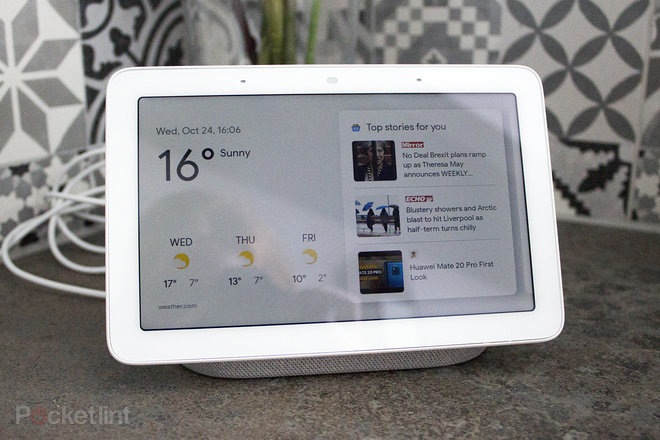
Trucs et astuces pour les informations sur Google Home
Comment suivre les actions et définir les préférences boursières
Ouvrez l'application Google Home > Cliquez sur l'onglet Accueil en bas à gauche de l'application Google Home > Paramètres > Faites défiler jusqu'à Plus de paramètres > Cliquez sur Services, appuyez en haut sous votre nom et votre adresse e-mail > Appuyez sur Actions.
Vous pouvez ajouter vos actions préférées à une liste de surveillance pour y accéder rapidement. Il y a une barre de recherche en haut si vous savez ce que vous recherchez, ainsi que des onglets de marché local et de marché mondial, qui proposent tous deux des suggestions.
Comment changer vos sources d'actualités
Dites « Ok Google, écoute les actualités » et vos appareils Google Home diffuseront des actualités provenant de diverses sources. Vous pouvez modifier les sources d'où vous souhaitez que les nouvelles proviennent, ainsi que l'ordre.
Ouvrez l'application Google Home > Cliquez sur l'onglet Accueil en bas à gauche de l'application Google Home > Appuyez sur Paramètres > Faites défiler jusqu'à Plus de paramètres > Cliquez sur Services, appuyez en haut sous votre nom et votre adresse e-mail > Appuyez sur Actualités.
Pour ajouter une source d'actualités, appuyez sur « + Ajouter des sources d'actualités » en bas de la liste. Pour modifier l'ordre, sélectionnez « Modifier l'ordre » en haut de la liste. Pour vous débarrasser d'une source, appuyez sur le « X » à droite de la source.
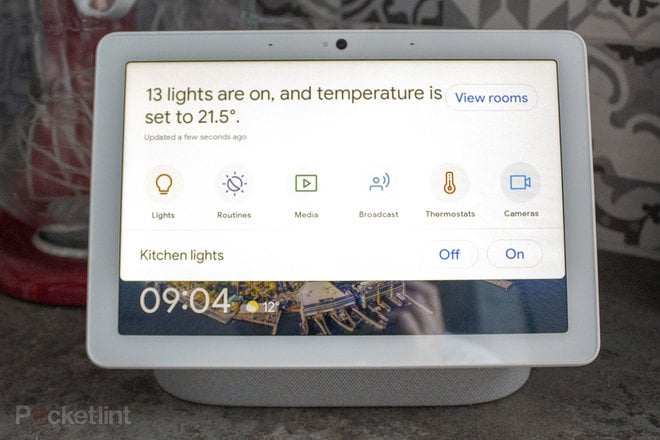
Trucs et astuces pour le contrôle de la maison intelligente de Google Home
Google Home peut contrôler les appareils connectés à Internet dans votre maison, y compris les ampoules dePhilips Hue, Ruche etIkéa, caméras deNidet Netatmo, des prises TP-link et Wemo, des thermostats Nest,Honeywell, Tado etRuche, et bien plus encore.
Vous pouvez non seulement allumer et éteindre les appareils à l'aide de votre voix ou de l'application Google Home, mais vous pouvez également séparer les appareils par pièce et tout contrôler depuis l'application Home, ce qui rend le contrôle de la maison intelligente très simple. Vous pouvez également tirer parti des recettes IFTTT pour tirer le meilleur parti de Home et de vos appareils, mais ce n'est pas obligatoire.
Comment ajouter des appareils domestiques intelligents tiers
Google Home s'appuie sur des services tiers pour vous offrir une expérience plus riche, notamment en matière de contrôle de la maison intelligente. Il existe un grand nombre deappareils domestiques intelligents compatibleset la liste ne cesse de s'allonger. Si vous disposez déjà d'appareils pour maison intelligente ou si vous souhaitez savoir si un appareil que vous souhaitez acheter est compatible :
Cliquez sur l'onglet Accueil en bas à gauche de l'application Google Home > Cliquez sur l'icône Ajouter en haut > Appuyez sur Configurer l'appareil dans la section Ajouter à l'accueil en haut > Choisissez l'option « Avoir quelque chose de déjà configuré » sous Fonctionne avec Google > Recherchez le fabricant de votre appareil et suivez les instructions.
Ajouter un appareil à une pièce de votre maison
Une fois que vous avez configuré un appareil domestique intelligent tiers, il apparaîtra au bas de l'onglet Accueil de l'application Google Home. Il y aura une icône « Ajouter à la pièce » sur laquelle vous pourrez appuyer pour placer l'appareil domestique intelligent dans une pièce de votre maison, mais si cette icône n'apparaît pas :
Ouvrez l'application Google Home > Cliquez sur l'onglet Accueil en bas à gauche > Cliquez sur la pièce à laquelle vous souhaitez ajouter votre nouvel appareil > Cliquez sur l'engrenage Paramètres en haut à droite > Cliquez sur Choisir les appareils > Sélectionnez l'appareil que vous souhaitez ajouter à cette pièce > Suivant.
Vous pouvez également accéder à une liste de vos appareils et à leur emplacement via l'onglet Accueil en bas à gauche de l'application Accueil > Paramètres > Plus de paramètres > onglet Assistant en haut sous votre nom et votre adresse e-mail > Contrôle domestique.
Changer la pièce dans laquelle se trouve un appareil
Vous pouvez déplacer votre Nest Hub de votre cuisine vers votre chambre, ou votreprise intelligentede votre bureau à votre salon, par exemple. Placer des appareils dans les pièces de votre maison facilite leur contrôle. Par exemple, vous pouvez alors dire « Ok Google, éteins les lumières du salon » et toutes les lumières liées au salon s'éteindront.
Ouvrez l'application Google Home > Cliquez sur l'onglet Accueil en bas à gauche > Cliquez sur l'appareil que vous souhaitez déplacer > Cliquez sur Pièce > Choisissez une pièce > Enregistrer.
Renommer un appareil domestique intelligent
Nommer un appareil facilite son contrôle via Google Assistant. Par exemple, vous pouvez nommer une prise intelligente contrôlant la lampe de votre salon « Lampe de salon » plutôt que « TP-Link Smart Plug 45688 », ce qui vous permet de demander à Google d'allumer ou d'éteindre la lampe du salon. , plutôt que d'avoir à mémoriser le nom.
Ouvrez l'application Google Home > Cliquez sur l'onglet Accueil en bas à gauche > Cliquez sur l'appareil que vous souhaitez renommer > Cliquez sur l'engrenage Paramètres en haut à droite > Cliquez sur Nom > Choisissez un nom > Enregistrer.
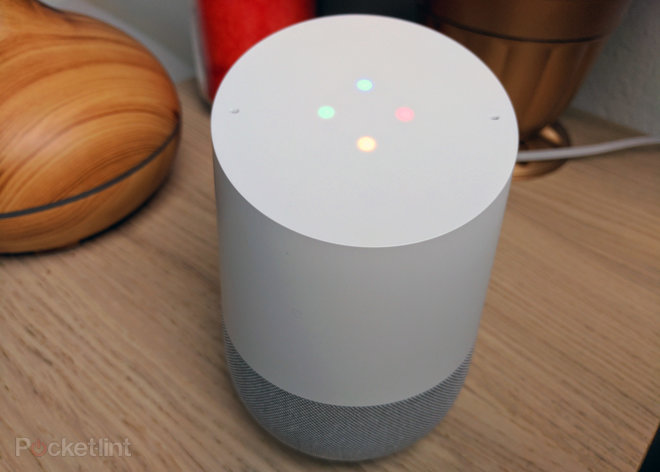
Trucs et astuces sur les appareils Google Home
Réinitialiser Google Accueil
Pour effectuer une réinitialisation d'usine et restaurer votre Google Home à un état comme neuf, maintenez le bouton du microphone enfoncé pendant environ 15 secondes. De là, vous pouvez le lier à un autre compte Google à l'aide de l'application Google Home.
Redémarrez Google Accueil
Que faire lorsqu'un gadget ne fonctionne plus ? Vous le redémarrez, ou le « redémarrez ». Google l'a inclus dans l'application Home et cela fonctionne pour tous les appareils Google Home.
Open the Home app > Select the Home tab in the bottom left of your screen > Select the Home devices you want to reboot > Tap the Settings cog in the top right > Tap on the three dots in the top right > Reboot.
Touch your way through things
Aside from your voice, you can control Google Home with your touch. Tap the top of the speaker once to awaken your Google Home or to pause and play a broadcast. You can also slide your finger along the centered circle at the top to change the volume.
Mute the mic
If you want to stop Google Home from “always-listening”, look for the button on the back of the speaker. It’s the only button, and it has a microphone on it. Press it and Home will turn off the microphone (four amber lights will light up on top). Press it again, and it’ll tell you the microphone is on.
When it’s on, Google Home is in the always-listening mode and will listen for and respond to your commands.
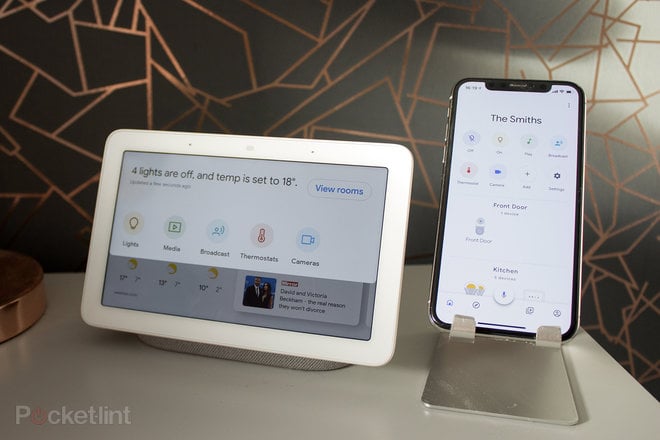
Google Nest Hub and Nest Hub Max tips and tricks
How to reset Nest Hub and Nest Hub Max
Press and hold the volume up and volume down buttons on the back of the Nest Hub or Nest Hub Max simultaneously for 10 seconds to reset the device. Continue to hold them down until the device has reset. A warning message will appear beforehand.
Adjust the display to fit with your home
Google Nest Hub and Nest Hub Max feature a display and a speaker. The display can be adjusted in a variety of ways to enable it to blend into its surroundings better, from choosing when low light mode is activated to setting the minimum brightness. You can even set the Nest Hub and Nest Hub Max’s displays to adjust their colour to match their environment.
Open the Google Home app > Click on the Home tab in the bottom left of the screen > Tap on your Hub device > Tap on the settings cog in the top right > Scroll down to display > Adjust the settings according to your preferences.
Turn night mode on
Night mode will reduce the volume of responses during specific times.
Open the Google Home app > Click on the Home tab in the bottom left of the screen > Tap on your Hub device > Tap on the settings cog in the top right > Night mode > Toggle on or off.
Change what the Nest Hub or Nest Hub Max display shows when not in use
You can change what your Hub display shows when it isn’t being used to control your smart home devices, present you with news snippets or play a YouTube video on how to make the best cocktails.
You can select between Google Photos, Art Gallery, Full Screen Clock and Experimental. You can also select to hide or show the weather for your area, whether or not to show the time when in ambient mode and the speed at which images change when in ambient mode.
Open the Google Home app > Click on the Home tab in the bottom left of the screen > Tap on your Hub device > Tap on the settings cog in the top right > Photo Frame > Select your preferences.
Change the clock format between 12 and 24-hour
Open the Google Home app > Click on the Home tab in the bottom left of the screen > Tap on your Hub device > Tap on the settings cog in the top right > Time Format.
Using the Nest Hub touchscreen navigations
Swipe from the left edge to the right to display the clock screen. Double tap the clock screen to return to ambient mode. Double tap the display again from ambient mode to show calendar, weather, news information, or whatever you have set to appear.
Swipe up from the bottom to access display brightness, volume, alarms and settings. You can also turn do not disturb on from here.
Swipe down from the top of the display to see and control your linked smart home devices.
Mute the mic
Like Google Home, there is a microphone button on the back of the Nest Hub’s display at the top. Simply toggle it off to turn off the microphones. As the Nest Hub Max also has a camera, toggling this switch will also turn off the camera with the microphone.
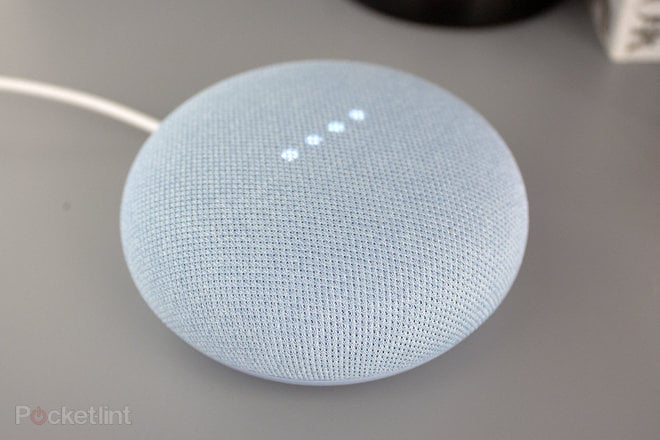
Google Home Mini and Nest Mini device tips and tricks
Mute the mic
Both the Google Home Mini and the Nest Mini have a microphone mute button on the rear. Toggle it to switch the microphone on or off.
Change the volume
You can of course ask Google to turn the volume of your Home Mini or Nest Mini up or down, but you can also do it on the devices themselves too. Tap on each side (on the material) of the Nest Mini or Home Mini and your volume will go up or down depending on the side you tap. You’ll be guided with small LED lights on the Nest Mini, but you’ll need to guess on the Home Mini.
Play or pause
The Nest Mini offers on device control for play and pause as well as volume. Tap the four lights in the middle of the Nest Mini when a song is playing on your Nest Mini and it will pause. Tap again to play.
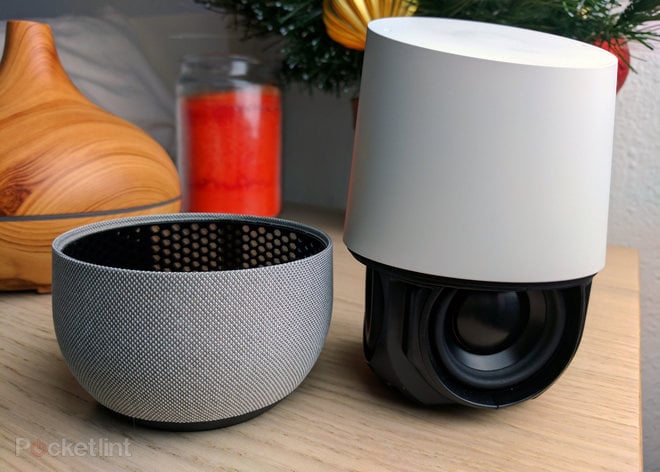
Google Home Easter eggs
Looking for some fun things to do with Google Home devices? These are technically Google Assistant easter eggs, but you’ll find they really give your Google Home device some personality:
- Say “Be my (insert language) interpreter to get real-time translations.
- Say “I’m feeling lucky” to start up a multiplayer game show.
- Say “Give me a random number between (x) and (y)” to hear a random number between the two – with beeping sounds to boot.
- Ask it to “Roll (insert number)-sided dice”: It’ll give you a random number, complete with sound effects.
- Say “(Contact name) is my (relationship)” to ask Assistant to associate certain relationship information with a contact for future reference.
- Say “Good morning” to hear a rundown of your day’s agenda, along with the current weather and news.
- Say “Send a message to (Contact name) on (messaging service like WhatsApp)” to dictate a message to a contact.
- Say “Wubba lubba dub dub” to get Assistant to respond with: “Are you in pain? How can I help?” or “Sorry, I don’t speak Birdperson” (a reference to the show Rick and Morty).
- Say “Beatbox” to hear a clip of someone beat-boxing.
- Say “Sing a song” to hear a horrible, brief song.
- Say “Read a poem” to hear a random poem from Google search.
- Say “Tell me a joke” to hear an age-appropriate joke from Pixar.
- Say “F*** you” to submit a bug report.
